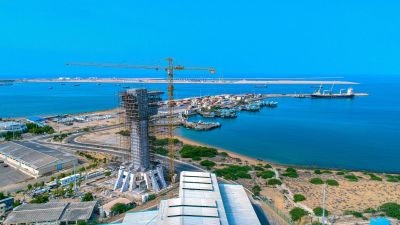‘Foul smelling water… forced to live with stench’: Delhi’s Janakpuri residents say no respite from contamination
In a detailed submission to the National Green Tribunal, the RWA of Janakpuri’s A1 Block accused the Delhi Jal Board of ‘deceit’ and called for another round of testing. The DJB did not respond to queries.
 Residents continue to report foul-smelling and visibly contaminated supply, the submission stated. (Source: File)
Residents continue to report foul-smelling and visibly contaminated supply, the submission stated. (Source: File)Even as the Delhi Jal Board (DJB) claims to have replaced corroded pipelines and found the water “satisfactory” in Janakpuri’s A-1 Block in West Delhi, residents say nothing has changed on the ground.
In a detailed submission to the National Green Tribunal (NGT) on Tuesday, which has been hearing the case, the Residents’ Welfare Association (RWA) cited independent lab reports showing E.coli levels as high as 24,000 MPN/100 ml and faecal coliform up to 92,000 MPN/100 ml. As per the Bureau of Indian Standards, there shouldn’t be bacterial pollution detected in any 100 ml sample.
The RWA said there was “no verifiable improvement” in either water quality or public health, adding that “not even a single demonstrable instance” existed of any household consistently receiving clean and potable water.
DJB officials did not respond to queries on the allegations.
What residents have said
Foul-smelling water: Residents continue to report foul-smelling and visibly contaminated supply, the submission stated.
It also alleged that the DJB’s reliance on its own Haiderpur water treatment plant laboratory findings “renders its claims untrustworthy,” particularly since the Central Pollution Control Board (CPCB) had already confirmed bacteriological contamination and the absence of residual chlorine in samples taken from the block.
Residents have urged the tribunal for a fresh round of testing by the CPCB in and around the affected area, and direct time-bound replacement of both water and sewer lines.
Homes affected: Residents said the contamination has physically affected their homes, with sewage backflow inundating basements and open pits left during pipeline works.
“Families are forced to live with the stench and sight of stagnant wastewater within their own premises,” the RWA told the Tribunal, calling the situation a “public-health emergency” and accusing the DJB of “administrative deceit”.
Work delayed: While the DJB told the NGT in its August progress report that it had begun replacing the 40-year-old water pipeline on August 4 and laid 205 metres of the 730-metre stretch, the RWA alleged the work remains incomplete.
The agency had been given 60 days to finish the task. “Barely 28% progress in over five weeks, followed by further delay, shows non-compliance in both letter and spirit,” the submission said.
The RWA also accused the agency of allegedly hiding the state of the adjoining sewer line, which, according to a DJB’s May 30 communication, had “outlived its life” and required simultaneous replacement.
“Repairing one pipe while allowing the other to leak filth beside it renders the entire operation technically meaningless,” the RWA said, citing continuing E. coli and faecal coliform contamination as proof of untreated sewage infiltrating the potable water network.
Unusable water tankers: Residents also raised concerns about the tanker water being supplied as an interim measure.
They alleged the tankers often arrived without functional hoses, forcing elderly residents to carry buckets upstairs. “Compliance cannot be claimed merely because a tanker is parked in the colony for photographic display,” the RWA claimed.
The latest CPCB report from September 14 found E.coli, faecal coliform, and total coliform contamination in 7 of 17 samples collected from the colony. One of the worst-affected homes recorded E.coli levels of 35,00,000 MPN/100 ml and total coliform at 1,60,00,000 MPN/100 ml, indicating active faecal matter in the household supply.
The RWA’s submission alleged that the DJB’s affidavit “trivialises the residents’ plight behind false hope such as expeditious execution and monitored progress”.
The RWA said, “it is… prayed… that the Central Pollution Control Board be directed to undertake a fresh round of water testing. The exercise may kindly cover at least 15 samples from the present affected area and an additional 5 samples from the adjoining section of the Applicant Block.”
It has also requested for the results to be verified by an independent statutory body “to ascertain the current extent of contamination, to ensure accountability and to prevent continued exposure of residents to unsafe drinking water”.







